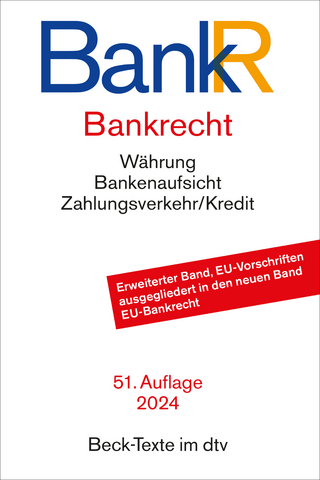
International Finance Regulation
John Wiley & Sons Inc (Verlag)
978-1-118-82959-2 (ISBN)
As the global market expands, the need for international regulation becomes urgent
Since World War II, financial crises have been the result of macroeconomic instability until the fatidic week end of September 15 2008, when Lehman Brothers filed for bankruptcy. The financial system had become the source of its own instability through a combination of greed, lousy underwriting, fake ratings and regulatory negligence. From that date, governments tried to put together a new regulatory framework that would avoid using taxpayer money for bailout of banks. In an uncoordinated effort, they produced a series of vertical regulations that are disconnected from one another. That will not be sufficient to stop finance from being instable and the need for international and horizontal regulation is urgent. This challenge is the focus of Georges Ugeux’s book.
International Finance Regulation: The Quest for Financial Stability focuses on the inspirations behind regulation, and examines the risks and consequences of fragmentation on a global scale. Author Georges Ugeux has four decades of experience in the legal and economic aspects of international business operations. He created and run the New York Stock Exchange’sinternational group in charge of developing the NYSE’s reach to non-US companies, including relationships with regulators and governments. Ugeux teaches European Banking and Finance of the Columbia University School of Law. Ugeux is uniquely positioned to provide recommendations and suggestions from the perspective of a top global authority. In the book, he explores international regulation with topics such as:
• Laws, regulations, and risks of overregulation
• Transformation of the U.S. market and creation of the Eurozone
• Development of a global framework and stability of the banking system
• In-depth examination of Basel III, the Dodd-Frank Act, the European Banking Union, and the Volcker Rule
The book also contains case studies from real-world scenarios like Lehman, CDS, Greece, the London Whale, and Libor to illustrate the concepts presented. Finance consistently operates within an increasingly global paradigm, and an overarching regulation scheme is becoming more and more necessary for sustainable growth. International Finance Regulation: The Quest for Financial Stability presents an argument for collaboration toward a comprehensive global regulation strategy.
GEORGES UGEUX, a lawyer and economist by training, is the Chairman and CEO of Galileo Global Advisors. Prior to founding Galileo, Ugeux joined the New York Stock Exchange as Group Executive Vice President, International and Research. He created and ran the New York Stock Exchange's international group in charge of developing the NYSE's reach to non-US companies, including relationships with regulators and governments. Ugeux teaches European Banking and Finance at the Columbia University School of Law and has been publishing, speaking, and blogging on these issues, namely for Le Monde (France) and the Huffington Post.
Preface xiii
Is Finance in a Stage of Permanent Crisis? xiv
Global Markets Are Interconnected xvi
Regulating Finance in a World in Crisis xviii
A Web of Institutional Complexity xix
Will Global Financial Regulation Become Lex America? xx
Applying Global Regulatory Convergence xxii
Regulator and Regulated: The Infernal Couple xxiii
Finance Cannot Be Left Unregulated xxiii
Five Years after Lehman, Regulation Could Not Change the Culture xxiv
A Culture of Outlaws xxv
I Will Never Give Up xxvi
Notes xxvii
Chapter 1 The Multiple Objectives of Financial Regulation 1
Stop (Ab)using Taxpayer Money 2
Protect Retail and Small Investors and Depositors 3
Ensure Transparency of Markets and Institutions 5
Implement a Truly Risk-Adjusted Remuneration System 6
Protect Deposits from Trading 7
Notes 8
Chapter 2 A Quarter Century of Banking Crises and the Evolution of Financial Institutions 11
Banking Crises Are Not Exactly a Recent Phenomenon 12
The Two Main Emerging-Market Crises 13
Subprime Crisis 14
Lehman Crisis 16
European Sovereign Debt Crisis 17
European Banking Crisis 17
LIBOR Manipulation 19
Will the Foreign Exchange Market Be Next? 21
Notes 23
Chapter 3 The Lessons of the Recent Financial Crises: The Explosion of Balance Sheets 27
Structural Overbanking of Europe 28
Lack of Transparency of the Derivative Markets 33
Emergence of the Credit Default Swap (CDS) Market 34
The Regulatory Landscape Is Not Global but Largely National 35
Notes 35
Chapter 4 Global Financial Regulation: The Institutional Complexities 37
Group of 20 (G20) 39
Financial Stability Board (FSB) 41
Bank for International Settlements (BIS) and the Basel Committee (BCBS) 42
International Monetary Fund (IMF) 43
International Organization of Securities Commissions (IOSCO) 45
International Accounting Standard Board (IASB) 46
International Association of Insurance Supervisors (IAIS) 47
Notes 50
Chapter 5 Capital Adequacy, Liquidity, and Leverage Ratios: Sailing toward the Basel III Rules 53
Part I: Capital Adequacy 55
Part II: Liquidity 59
Part III: Leverage 62
Notes 66
Chapter 6 Assessing Likely Impacts of Regulation on the Real Economy 69
Notes 73
Chapter 7 Regulating the Derivatives Market 75
Origin of the Derivatives Market 77
Size of the Derivatives Markets 78
U.S. Regulation: Dodd-Frank Act 78
European Market Infrastructure Regulation (EMIR) 79
Transatlantic Divergences 80
Short Selling Is a Form of Derivative 81
JPMorgan Chase London Trading Losses 82
Notes 83
Chapter 8 The Structure of Banking: How Many Degrees of Separation? 87
Systemically Important Financial Institutions (SIFIs) 87
Universal Banking Model 89
Separation Models 90
United Kingdom 90
United States 90
European Union 91
Sw+itzerland 92
Volcker Rule and Proprietary Trading 92
Too Big to Fail (TBTF): Is Size the Problem? 95
Prohibit the Trading of Commodities by Banks 97
Notes 98
Chapter 9 Banking Resolution and Recovery 101
Moral Hazard 102
Can the Bail-In Concept Avoid Taxpayers’ Bailout? 103
Lessons from the Financial Crisis 104
Living Will, or How Banks Want to Be Treated if They Are Close to Collapsing 104
United States 105
The Citi Recovery Plan 106
Role of the Federal Deposit Insurance Corporation in the United States 107
United Kingdom 110
European Banking Resolution and Recovery Directive 111
Regulatory Technical Standards 112
Can Resolution Rules Be Effective? 112
An Impossible European Institutional Challenge 113
Who Will Decide to Put Companies
Under Resolution Surveillance? 114
Notes 120
Chapter 10 Banking and Shadow Banking 125
Hedge Funds 125
United States 127
Europe 127
Other Types of Shadow Banking 127
Capital Markets and Securitization 128
Notes 129
Chapter 11 Rating Agencies and Auditors 131
Part I: The Rating Agencies 131
Part II: External Auditors 134
Part III: The Limits of Accountability 136
Notes 136
Chapter 12 Central Banks as Lenders of Last Resort Have a Conflict of Interest with Their Regulatory Role 139
Financial Stability 140
United States: Quantitative Easing 141
European Central Bank: The Long-Term Refinancing Operations (LTROs) 143
United Kingdom 144
Japan and Abenomics 145
Are Central Banks Balance Sheets Eternally Expandable? Have They Become Hedge Funds? 145
Is This Novation of Central Banks Legitimate or Legal? 147
Notes 147
Chapter 13 Financial Institution Governance (or Lack Thereof) 149
Risk Management 150
Dysfunctional Boards of Directors 151
Should the Chairperson Also Be the CEO? 152
Remuneration and Risks 153
Personal or Institutional Accountability 153
Notes 154
Chapter 14 Was It a Global Crisis? The Asian Perspective 157
Japan 158
China 160
India 161
Assessing the Asian Risk 162
Notes 163
Chapter 15 The Challenges of Global Regulation 165
Regulation, Policies, and Politics 167
Regulators and Sovereign Financing 169
European Central Bank Supervision: The E.U. Governance Challenges 169
The Risks of Regulatory Fragmentation 171
Bank Resolution: The Legal Nightmare 171
Basel III 172
Reemergence of Capital Markets 173
Restructuring Finance 173
Should Financial Communication Be Regulated? 174
Should Financial Media Respect a Code of Conduct? 175
Financial Education Is Key 176
Notes 178
Chapter 16 Regulation and Ethics 181
Management Integrity 182
Accountability 182
Transparency Is Key 183
A Principled Regulatory System Is Needed 183
Doing the Right Thing 184
Notes 186
Conclusion What Can We Expect? 189
A Few Books I Read and Found Helpful . . . 195
About the Author 197
Index 199
| Erscheint lt. Verlag | 8.8.2014 |
|---|---|
| Reihe/Serie | Wiley Finance Editions |
| Verlagsort | New York |
| Sprache | englisch |
| Maße | 160 x 236 mm |
| Gewicht | 431 g |
| Themenwelt | Recht / Steuern ► EU / Internationales Recht |
| Recht / Steuern ► Wirtschaftsrecht ► Bank- und Kapitalmarktrecht | |
| Wirtschaft ► Betriebswirtschaft / Management ► Finanzierung | |
| ISBN-10 | 1-118-82959-X / 111882959X |
| ISBN-13 | 978-1-118-82959-2 / 9781118829592 |
| Zustand | Neuware |
| Haben Sie eine Frage zum Produkt? |
aus dem Bereich


